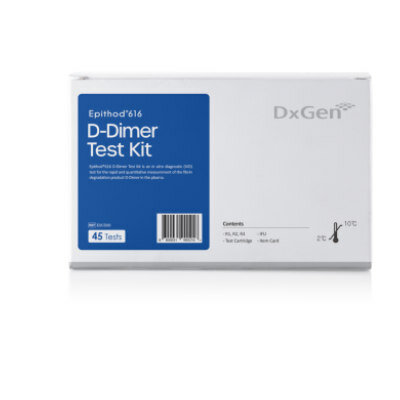ALT/AST Ratio Is an Independent Risk Factor for Gestational Diabetes Mellitus
By LabMedica International staff writers
Posted on 02 Feb 2022
Gestational diabetes mellitus (GDM) is defined as a state of impaired glucose tolerance first being discovered during pregnancy. GDM increases the risk of pregnancy complications and adverse perinatal outcomes, such as pregnancy-induced hypertension, preeclampsia, abortion, premature delivery, premature ruptures of membranes, and large for gestational age infants.Posted on 02 Feb 2022
GDM also increases the risk of type 2 diabetes (T2DM) for mother in the future and influences the metabolism of offspring in the long run, bringing both public health and economic burden. Aspartate aminotransferase-to-alanine transaminase ratio (AST/ALT) has been reported not only an assessment tool of hepatic diseases, but also a valuable prognostic tool for cardiovascular disease, arterial stiffness, cancers, and chronic kidney disease. Recently it has been of great interest as a possible novel marker for metabolic syndrome and insulin resistance.

Image: The Beckman AU5800 automatic analyzer (Photo courtesy of Beckman Coulter)
Endocrinologists at the Peking Union Medical College Hospital (Beijing, People’s Republic of China) and their colleagues included in a prospective, double-center, observational cohort study, a total of 1,128 pregnant women. Blood samples were collected at the first prenatal visit and 75-gram oral glucose tolerance test (OGTT) was conducted for all participants during 24 to 28 weeks of gestation. Biochemical parameters presented in the present study, including ALT, AST, total bilirubin (TBil), total cholesterol (TC), triglycerides (TG), low and high density lipoprotein cholesterol (LDL-C, HDL-C), were measured by Beckman AU5800 automatic analyzer (Beckman Coulter, Brea, CA, USA). Quality controls were performed by Bio-Rad biochemical quality control product (Bio-Rad Laboratories, Hercules, CA, USA).
The investigators reported that the incidence of GDM was 22.07% (249/1,128). ALT/AST ratio was higher in GDM group than in NGT group (0.92 versus 0.80). ALT/AST had positive correlations with fasting blood glucose, 1-hour and 2-hour blood glucose concentration during OGTT (0.089, 0.176, and 0.115, respectively). The odds ratio (OR) of ALT/AST for incidence of GDM was 1.603. The ROC-AUC of ALT/AST and TG/HDL-C reached 0.615 and 0.619, respectively.
The authors concluded that higher ALT/AST in early pregnancy, even within the normal range, was an independent risk factor of GDM. ALT/AST presented similar predictive ability to TG/HDL-C for GDM in this cohort study. The study was published on January 5, 2022 in the International Journal of General Medicine.
Related Links:
Peking Union Medical College Hospital
Beckman Coulter
Bio-Rad Laboratories













